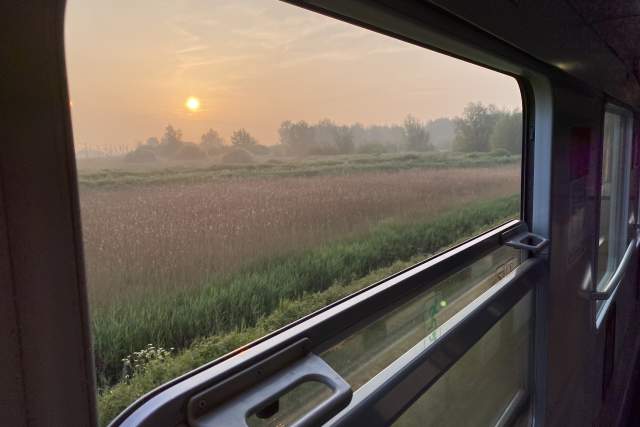Foreshadowed by the sharp flygskam or flight shame of yesteryear, the current resurgence of European train travel shouldn’t come as a surprise. With so many countries now actively looking to do absolutely everything they can to cut their emissions, greater rail connectivity — with enhanced and even revived routes and services, plus a shift to modern, energy-efficient rolling stock — makes complete sense. With the summer travel season in full swing, it’s time to explore this new golden era of European rail travel.
From Flight Shaming to Train Bragging
As a concept and a social trend, it could be argued that flygskam is now a thing of the past. That is, rather than simply publicly calling out those who travel by air, tangible effort is being put into actively providing alternatives for those wanting to travel more sustainably. In fact, it would be fair to say that the world has made that ever-so-subtle shift from flygskam to tagskryt (yes, more Swedish vocabulary) or “train brag”. It’s also clear that countries and associated national transport authorities across Europe are very much aware of this shift and — by various means — are making considerable strides to meet passenger demand for sustainable travel.
Take France, for example. In a bid to cut emissions by 40 percent in the run up to 2030, this year, the nation has essentially banned Air France — its flagship carrier — from serving destinations that can be reached in two-and-a-half hours by train. In the Netherlands, the situation has been handled differently, with passenger caps and staff shortages making air travel a rather unappealing option. Meanwhile, in Germany, the nation is setting its sights on doubling train ridership by the year 2030. As a sweetener, German authorities conducted a three-month experiment during the summer of 2022 to offer unlimited rail and bus services for just 9 euros a month. As a result, German train operator Deutsche Bahn said that it had seen a 10 percent increase in passenger numbers during this period. It was also revealed that 1 in 5 passengers who took up the offer had not previously relied on public transport.
How to Take Advantage of a Rapidly Expanding Rail Network
The summer of 2023 is seeing a tangible increase in route connectivity across the continent, with European operators introducing new routes and, in some cases, even reviving long dormant services. But more than a simple increase in connectivity, a notable feature of this revival is the fact that the services on these routes have been modernised and, in many cases, updated with both sustainability and the needs of today’s travellers very much in mind.
For example, the Stockholm to Hamburg service operated by Swedish rail company SJ is powered entirely by renewable energy while Wi-Fi, charging points, and storage for bikes and sports equipment are standard features on the many networks that now crisscross the continent of Europe.
But for those who want more than just a sustainable way to get from A to B, any of the continent’s ever-increasing number of long-distance sleeper services offer an unbeatable slow travel experience.
One of the season’s most talked about routes is the Berlin to Brussels service run by European Sleeper, a start-up Belgian-Dutch railway company. The route runs via Amsterdam and offers easy access to Prague, Warsaw, and Paris, but for UK travellers, the Brussels terminus makes connecting to London via Eurostar a breeze.
For those looking to travel between Vienna and Paris, ÖBB — Austria’s national rail operator — has unveiled a Nightjet service that links these two great European cities via Salzburg and Munich. In a further expansion of its network, ÖBB also offers a Nightjet service from Vienna and Munich to the Italian cities of La Spezia and Genoa and — for those who want to go further afield — over the French border to Nice and beyond to Monaco.
On the Iberian peninsula, both Spain and Portugal are making considerable improvements to their rail network. In the former country, two separate operators — Renfe, Spain’s national rail company, and French-owned SNCF — are competing to offer low fares on the Madrid to Alicante route while a third company — Iryo — is now offering a high-speed, low-cost service between Madrid and Barcelona. Across the border in Portugal, travellers can currently make their way between Lisbon and Porto in about three hours, but with a new high-speed rail link between the two cities — to be commenced in 2024 — they can look forward to making this same journey in just over an hour. What’s more, this improvement will offer a cross-border link with Spain, making travel across the Iberian peninsula a snap.
This brief round-up is by no means a definitive guide to all of the routes currently on offer across Europe, but for a deeper dive into the topic, get the inside track from The Man in Seat 61 for country-by-country information and/or the relevant national rail operator for more detail on specific services and fares. But wherever you choose to go in Europe this summer, you can do so knowing that your journey is part of a greater shift towards a more sustainable future.

